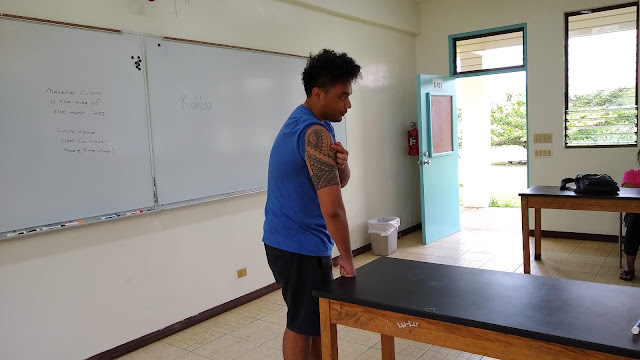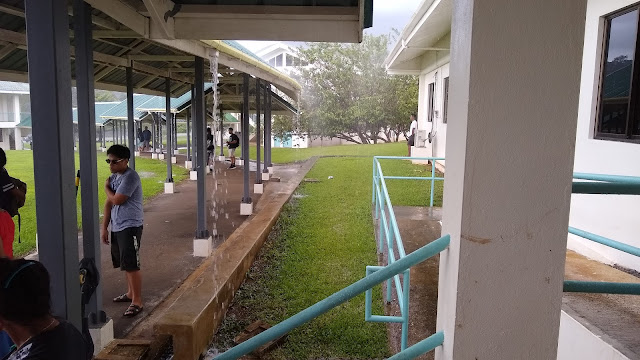Items of material culture

Keanu explained the traditional, family, and personal meanings of his tattoo. Michsane and Venister showed the difference between the Pohnpeian kiam (kuom in Kosraean) and the Kosraean fohtoh used for carrying traditional foods. Both are made from coconut fronds, yet the designs are vastly different. The kiam is used to hold yam, breadfruit, and pig. The fohtoh is used for hard taro, coconuts, and fish. Via-Marie brought in a koapoanok en Pohnpei/Kitti. This Kosraean dok is actually made of basalt, but some are made of hard wood. Arlynn presented the tok. Justin brought in a Mwoakillese pandanus mat called a rohp that was made on Mwoakilloa. Tulpe Suselyn brought in a model of a Kosraean tok and tohp for fahfah. The word tohp may derive from the English word "tub" and is thus somewhat puzzling. Fahfah is, as far as I am aware, a pre-contact food in Kosraean culture. One might expect the material cultural objects that accompany the pr


